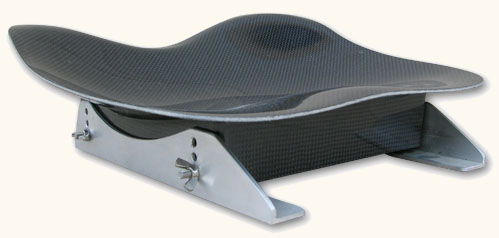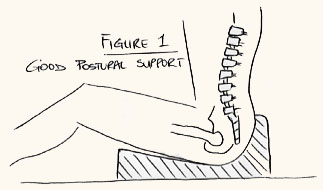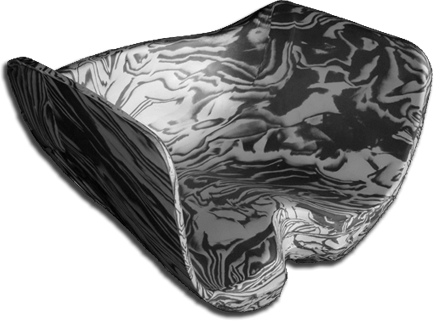Science behind kayak seats
In our genre of endurance kayaking we choose to sit on our ends, for hours on end. So we need to take the pressure off. High school physics taught us that to reduce pressure points we need to spread the load over a wide area. To make a seat comfortable over the long periods we paddle in endurance racing, we need to reduce any pressure points.
Pressure = Force/Area
Force is paddler’s weight downwards. The area is the surface area of the bum/seat interface. It stands to reason that the pressure (and soreness) will be reduced if we make the area that supports the paddler’s weight as large as possible. I have carefully designed the Bumfortable kayak seat to do this with nice soft, warm foam, including an extended area around the hamstrings. In doing this though I have also been careful to reduce the pressure on known tender spots such as the ischial tuberosities (bum bones).
The only drawback to this large area of contact is that it tends to reduce the paddler’s ability to pivot in the seat. Observe a sprint K1 paddler’s seat. It’s at the other extreme, skinny, tiny, highly polished and very little area. This allows a large freedom of movement and rotation of bums on seats. Bum rotation is desirable so that we use our powerful leg muscles to aid paddling. Those of you who have tried using these seats for endurance racing will know how incredibly uncomfortable these kayak seats can be for long distance racing. However, traditional K1 paddlers only race for a few minutes and therefore easily tolerate the relatively high pressures at the seat/bum interface in trade for the extra short-term speed and power provided by this design.
As endurance paddlers we are forced to compromise a portion of this rotation in favour of surviving the comfort battle. A comfortable endurance “armchair” seat is a compromise that restricts our rotation a little. We all have flesh on our bums (some more than others), and this naturally allows some additional rotation. There are some other tricks too, such as wearing two pairs of lycra or nylon shorts, thus allowing some slip. Other tricks are to sit on shopping bags, or spinnaker nylon. (Caution though, this makes the boat less stable.)
Bumfortables have a soft, yet slightly slippery surface that enables some degree of rotation in the seat so paddlers can get the best of both worlds!

Biomechanics & Bumfortable Design
The Bumfortable kayak seat has been carefully designed to provide a biomechanically correct posture. There are many factors to balance in the design such as:
- good postural rotation of all vertebrae
- good postural support for endurance without being lazy
- good rotation for power
- enabling core and abdominal engagement
- elimination of rubbing and chafing
- balance between support and maximizing rotation at the seat
- minimising risk of injury
As tempting as it sounds, we can’t have an armchair in our kayak because that will interfere with rotation with an attendant lack of power, and will give us lots of chafing with blisters.
Some kayaks attempt this and we’ve all seen recreational kayaks and sit-on-top fishing kayaks with back supports up to mid back height. That’s fine for sitting around fishing, but they totally restrict paddling technique. Bumfortables keep the back and hip support as low as possible (see figure 1) for 3 main reasons:
- To give free and easy rotation. (Reduce rotational restriction)
- To reduce rubbing, chaffing, and blisters.
- For healthy spines. If we restrict lower vertebrae, then the upper vertebrae are forced to do all of the rotation with eventual over-use injuries.


